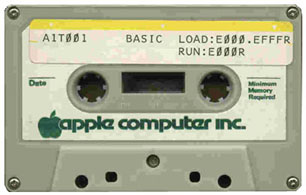"ROR" in Microsoft BASIC for 6502
If you disassemble any version of Microsoft BASIC for 6502, you’ll find this code in a function that normalizes the (simulated) floating point accumulator:
Some Assembly Required
If you disassemble any version of Microsoft BASIC for 6502, you’ll find this code in a function that normalizes the (simulated) floating point accumulator:
Everyone and their grandmother builds Linux kernels. Many people build BSD, and some brave men even compile the OS X kernel every now and then. Why not compile your own Solaris kernel for a change?
If you type “WAIT6502,1” into a Commodore PET with BASIC V2 (1979), it will show the string “MICROSOFT!” at the top left corner of the screen. Legend has it Bill Gates himself inserted this easter egg “after he had had an argument with Commodore founder Jack Tramiel”, “just in case Commodore ever tried to claim that the code wasn’t from Microsoft”.
After the disaster of the original Xbox, Microsoft put a lot of effort in designing what is probably the most sophisticated consumer hardware security system to date. We present its design, its implementation, its weaknesses, how it was hacked, and how to do it better next time.
The original NMOS version of the MOS 6502, used in computers like the Commodore 64, the Apple II and the Nintendo Entertainment System (NES), is well-known for its illegal opcodes: Out of 256 possible opcodes, 151 are defined by the architecture, but many of the remaining 105 undefined opcodes do useful things.
When I disassembled Steve Wozniak’s Apple I BASIC, I found a 6502 trick that I had never seen before, although I had read a lot of 6502 code, including the very well-written Commodore BASIC (i.e. Microsoft BASIC for 6502).

The audio file that was posted two weeks ago is indeed a very important artifact of computer history: It is a recording of the “Apple I BASIC” cassette tape that came with the Apple I. It is the first piece of Software ever sold by Apple (not counting computer firmware).
This audio file is an important (previously unreleased) artifact of computer history. The aim of the puzzle is to decode and identify it correctly.
It probably takes a geek in the front row (which is likely for a concert in San Francisco) to notice that the computer schematics Tool showed on the screens during their âRosetta Stonedâ performance are those of an Apple 1 – but distorted:
When people talk about porting their applications to 64 bit, I sometimes hear them wonder how long it will be until they have to port everything to 128 bit – after all, the swiches from 8 to 16 bit (e.g. CP/M to DOS), 16 to 32 bit (DOS/Windows 3 to Windows 95/NT) and 32 to 64 have all happened in the last 25 years.
Imagine you’re writing a Game Boy game, and the resulting ROM with all the code and data is just a little over one megabyte in size. No big deal, just pad the game to two megabytes, and use a 2 MB ROM in the cartridge. Just tell the linker to allocate 2 MB or RAM, put the actual data at the beginning, and then write a 2 MB “.gb” image to disk, which will then be sent to the ROM chip factory.
pushl $(0xcb<<24)|0x08 call .-1
What does this instruction sequence do? (This was a collaborative effort by Chuck Gray, Myria and Michael.)
UNIX, Windows NT, and all the operating systems in their class rely on virtual memory, or paging, in order to provide every process on the system a complete address space of its own. An easier way to protect processes from each other is segmentation: The 4 GB address space of a 32 bit CPU is divided into segments (consisting of a physical base address and a limit), one for each process, and every process may only access their own segment. This is what the 286 did.
It’s time for a puzzle again! (submitted by sheepmaster)
Assigning internal version/family/model IDs to products is a non-trivial task, especially if there are several different families/architectures on your roadmap, and if the marketing names and target markets have no real correlation to the internal architecture.
Due to simplified instruction decoding of the Intel 80287, this CPU had opcode aliases for instructions like FXCH, FSTP, i.e. there were some additional encodings that did the same as the originals as defined by the 8087. As a side effect of this, a new instruction, FFREEP appeared, although not intented by Intel.
Virtualization means running one or more complete operating systems (at the same time) on one machine, possibly on top of another operating system. VMware, VirtualPC, Parallels etc. support, for example, running a complete GNU/Linux OS on top of Windows. For virtualization, the Virtual Machine Monitor (VMM) must be more powerful than kernel mode code of the guest: The guest’s kernel mode code must not be allowed to change the global state of the machine, but may not notice that its attempts fail, as it was designed for kernel mode. The VMM as the arbiter must be able to control the guest completely.
What’s the next word in this sequence: PT, PD, PDP, …?
Imagine you’re an i386 user mode application on a modern operating system, and you want to make a syscall, for example to request some memory or create a new thread. But syscalls can be made in various ways on the i386 family of CPUs (int, call gates, sysenter, syscall), and CPUs tend to support only a subset of them. But hardcoding “int” into the kernel is a waste of resources on modern CPUs, because sysenter is a lot faster.